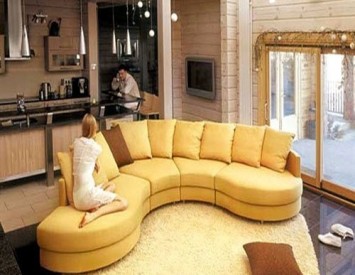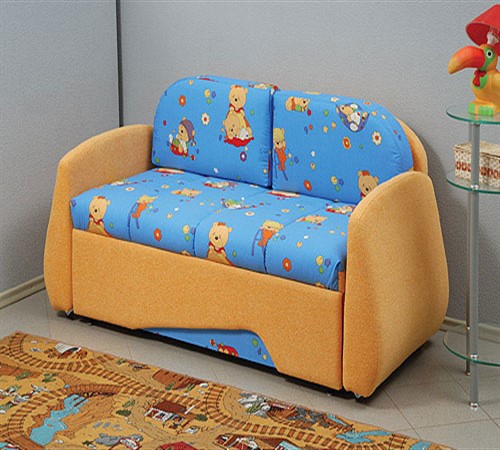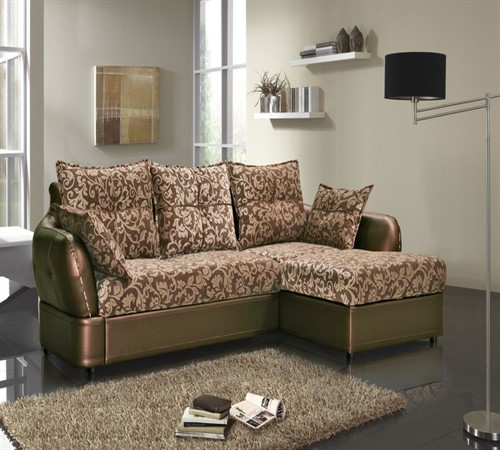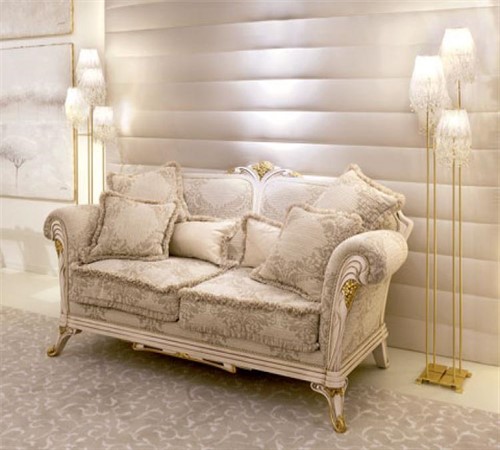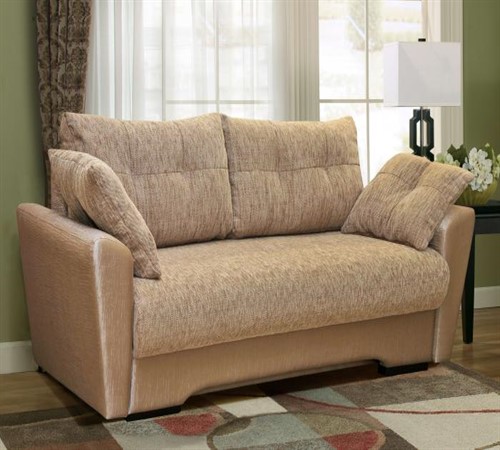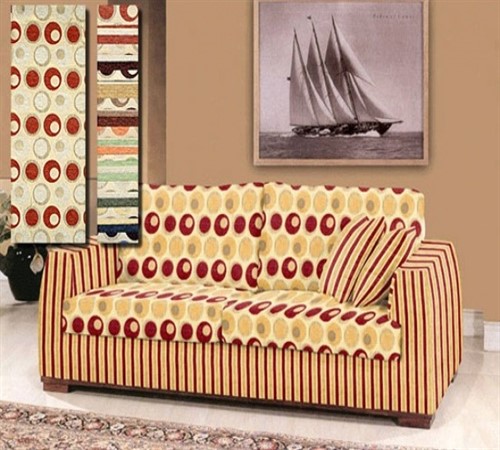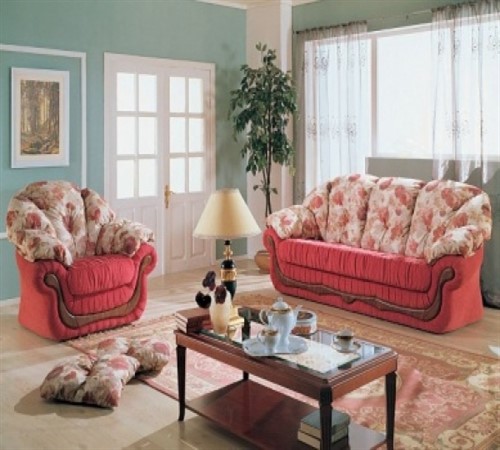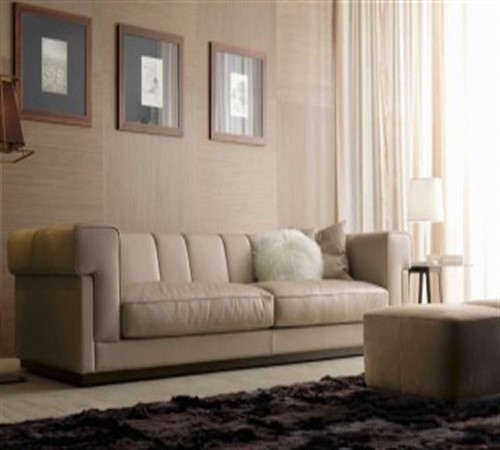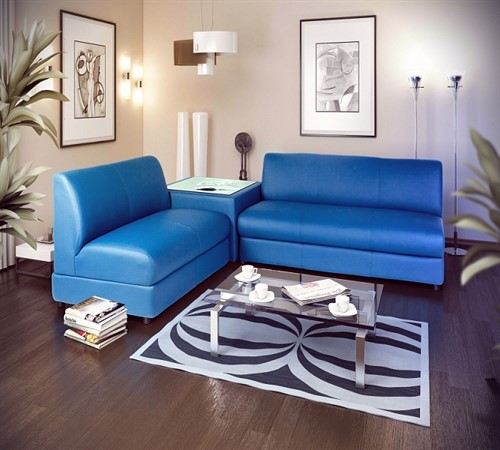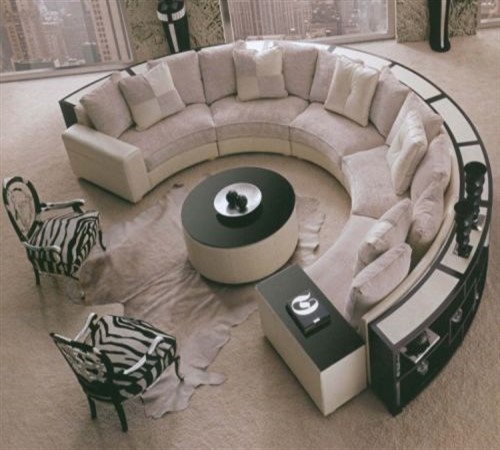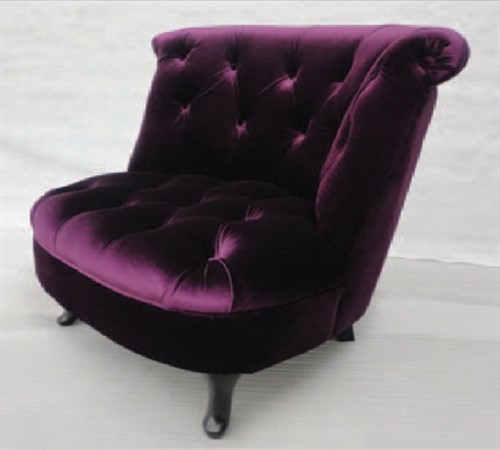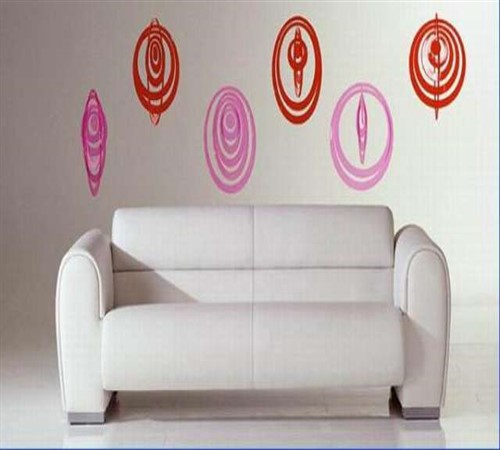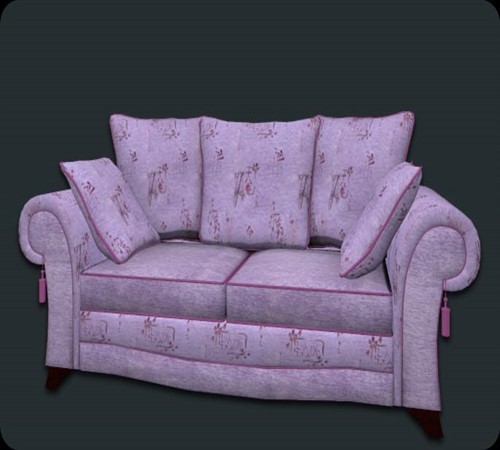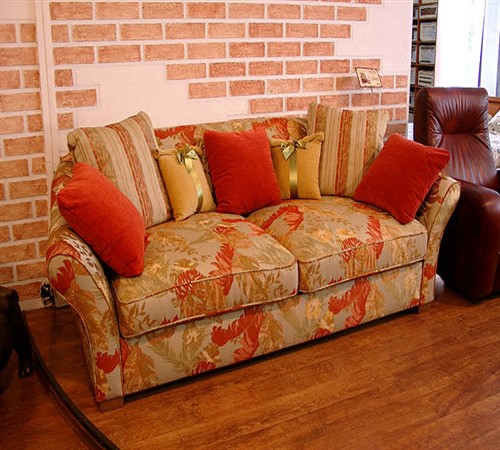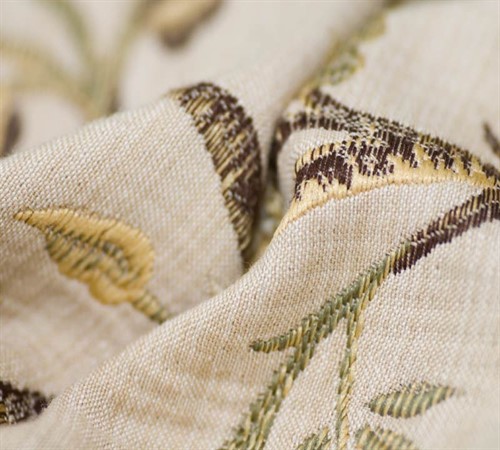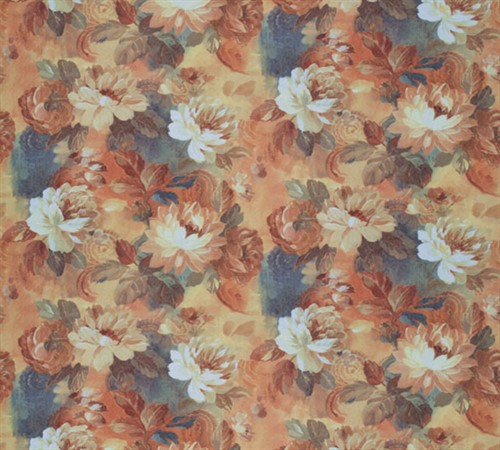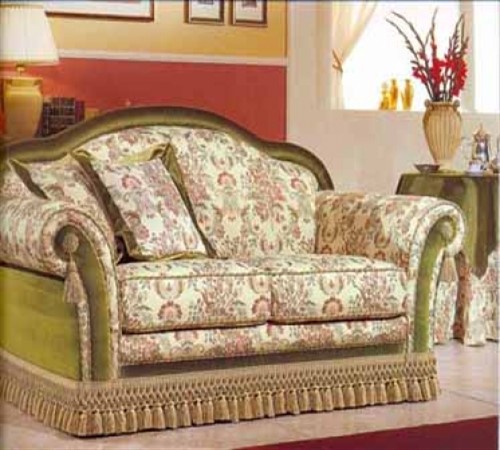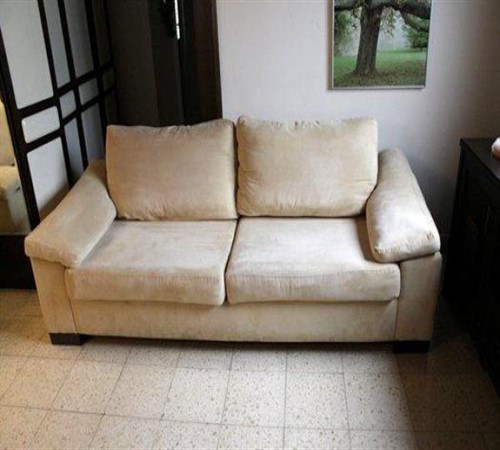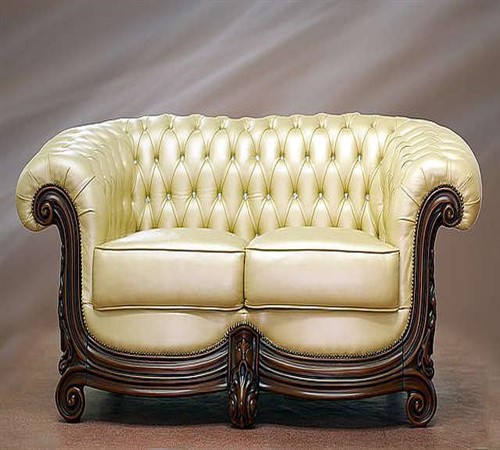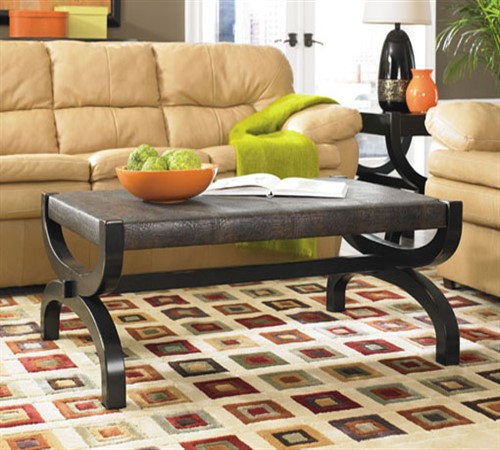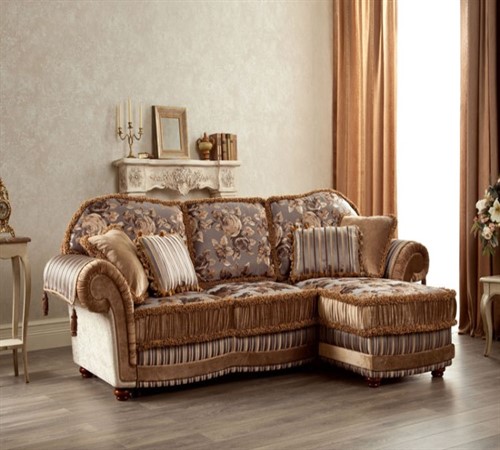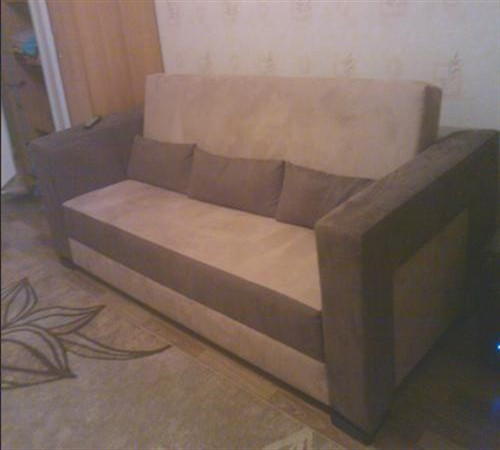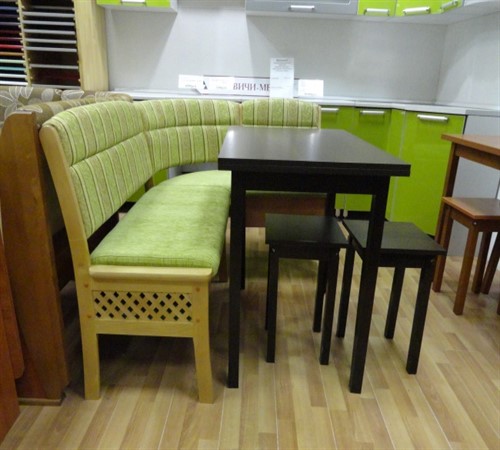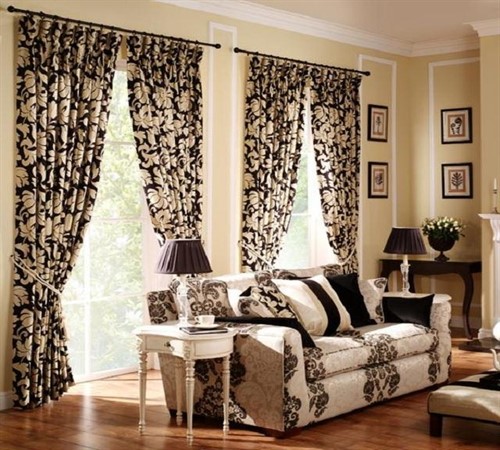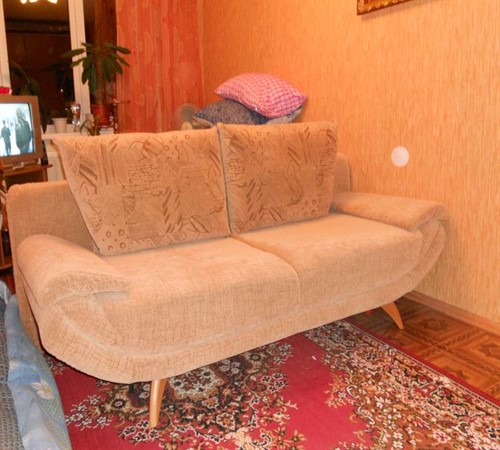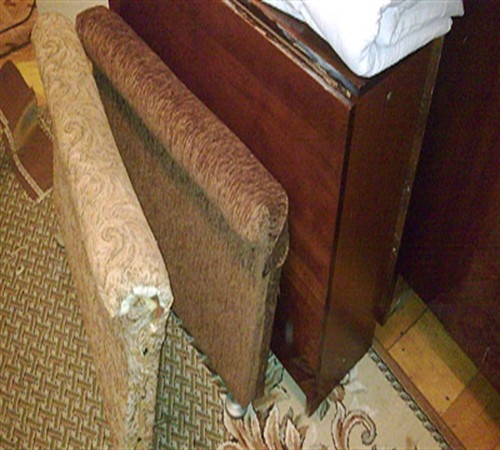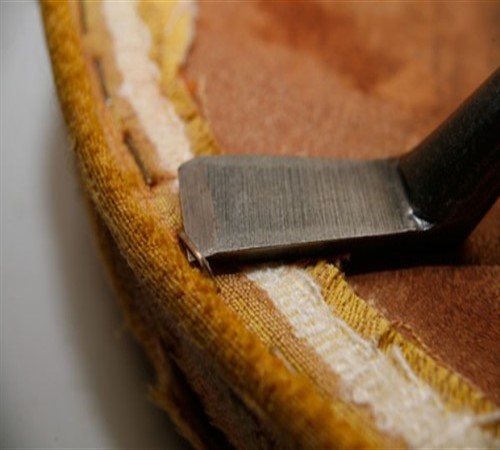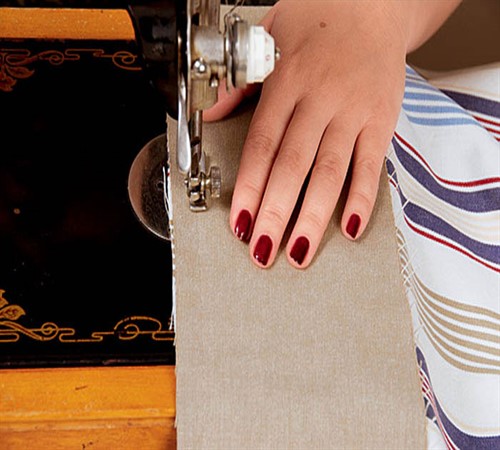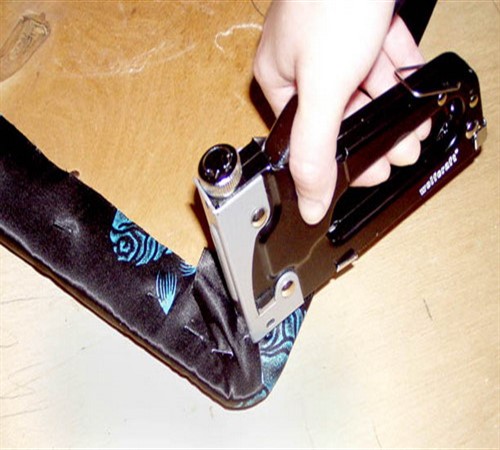When choosing a sofa or clipping of the old furniture, upholstery material deserves special attention, since various types of upholstery have excellent operational characteristics, design, cost and other trifles. In addition, it is quite possible that the upholstery material, ideal for the living room, will look absolutely irrational on the kitchen sofa.
Content
Types of upholstery materials
Currently, there are 2 main categories of materials used for furniture upholstery are textiles and leather.
Textile upholstery
The range of upholstery fabric is increasing every year, striking with its splendor. However, the performance of various kinds of textile upholstery largely depends on the composition of the fabric, among which it stands out:
1. Natural textiles (cotton, silk flax, wool), which is at least 50% of natural threads.
Pros:
- environmental friendliness;
- breathability;
- it does not cause allergies.
Cons:
- there is a great probability of shrinkage of material;
- crushing;
- low wear resistance;
- small life;
- high cost.
2. Artificial textiles (viscose) containing threads obtained in the process of processing natural raw materials.
Advantages:
- excellent breathability;
- the ability to absorb moisture;
- pleasant to the touch the softness of the material.
Flaws:
- crushing;
- poor wear resistance;
- the fragility of use.
3. Synthetic textiles, the basis of the production of which is nylon, polyester, Lavsan, Kapron and others, are 40% represented by polyamide and polyester threads.
Pros:
- increased wear resistance;
- lack of deformation of the material over time;
- the invariability of the original shade under the influence of ultraviolet radiation;
- simplicity of care;
- durability.
Cons:
- poor breathability;
- passes dust.
When choosing a composition, it is worth considering that synthetic threads give the canvas strength, thereby increasing its wear resistance. As a rule, most of the upholstery fabric is made by combining natural threads and synthetic or artificial, although a combination of all species in one canvas is often found.
In addition to the composition of the fabric, an important role in the formation of important properties of upholstery textiles is played by the method of its production:
- Woven. The front side of the fabric can be covered with villi, woven into the fabric during the manufacture of the canvas (shanill), or made by longitudinal-transverse weaving of threads without the use of pile (jacquard). At the same time, the pile fabric is released by the softness of the material, and the bezrax with a rigidity affecting the duration of the upholstery.
- Non -woven (phlock, suede). The materials related to this type of textiles are represented by pile fabrics. At the same time, the pile is not woven, but applied to the base with the help of an adhesive layer, after which the base has dried, it can be removed.
Most of the upholstery materials with a tissue base are subjected to Teflon impregnation, which improves indicators such as strength, resistance to mechanical damage, and the duration of operation. In order to save money, the teflon coating can be poured onto the fabric, and not applied in the form of impregnation. However, the qualitative characteristics are slightly reduced.
Leather upholstery
The most expensive and respectable material has always been natural and artificial skin.
Genuine leather, covered at the end of the processing process with a special composition, has the best qualities than left without coating, although it does not look very natural.
Currently, qualitatively made artificial skin is practically not inferior in natural properties, but it costs even an order of magnitude cheaper.
At the same time, both genuine and artificial leather, produced in violation of the technological process, can quickly crack, creep at the seams, spoiling all the aesthetics of the design.
Thus, the types of upholstery of upholstered furniture today are quite diverse, revealing great opportunities in choosing the necessary material. However, a variety of textile materials, like various kinds of leather upholstery, have their own advantages and disadvantages that must be taken into account when choosing or pulling upholstered furniture regarding future operational conditions and interior of the room.
Upholstery options for upholstered furniture
Any upholstery material has its own unique characteristics that determine its quality and properties.
The following materials for upholstery of upholstered furniture are in greatest demand:
1. Fllock - is made by gluing on the tissue basis of polyester villi. It is quite possible to find a phlock imitating velvet, suede, shenill, velor, since the villi used in the production can have a different length. Due to the high content in the material of synthetics, the placement of furniture in the bedroom, not a very rational solution. However, in the living room, such furniture will have to be very in the way, especially with pets who want to sweat their claws.
Advantages:
- variety of colors;
- has high strength qualities before mechanical exposure;
- relative resistance to abrasion;
- does not burn out;
- it lends itself to any type of cleaning with neutral detergents;
- unpretentiousness of care;
- low cost.
Flaws:
- high static material requires constant treatment with antistatic agents;
- absorbs smells;
- the operational period is limited by the quality of the material.
2. Velur - includes diverse pile fabrics, among which knitted ones are most often used. At the same time, velor, which has the basis and combining woolen, cotton threads with chemical fibers, significantly exceeds knitted pile fabrics both in price and in quality. In addition, Velura’s pile is either smoothed, or decorated with a certain type of pattern, embossing, combing along the stencil and other ways, giving the material a special attractiveness.
Pros:
- variety of colors;
- refers to breathable materials;
- stretches, allowing to pull the furniture of complex shapes;
- it has good wear resistance;
- it differs in simplicity of care;
- acceptable cost.
Cons:
- low strength strength;
- there is a high probability of molting of the material during wet cleaning;
- fragility.
3. Microfiber - with tactile examination, very similar to natural suede. At the same time, microfiber is made by weaving polyamide fiber, which gives the material a lot of positive qualities. To increase the operational properties of the microfiber, it is covered with Teflon impregnation.
Advantages:
- wide tinted gamut;
- piling resistance;
- does not change the shade under the prolonged exposure to ultraviolet radiation, the use of cleaning agents;
- high resistance to abrasive abrasion;
- the ability to pass air;
- prevents dust accumulation;
- the ability to restore after a slight mechanical effect;
- lightness in care;
- duration of operation.
Flaws:
- high cost.
4. Shenill is a fabric with high density, strength due to the complex interweaving of synthetic and natural fibers, but pleasant and soft to the touch, thanks to the hello thread, which is obtained as a result of a pile of spirals intertwined in a spiral.
Pros:
- excellent wear resistance;
- does not attract dust;
- lack of fabric shrinkage;
- not subject to peeling;
- the fabric is not crushed;
- does not absorb smells;
- resistance to fading;
- simplicity of care;
- duration of operation;
- the average price category.
Cons:
- not resistance to moisture;
- not suitable in the presence of pets.
5. Jacquard is an artificial silk that differs from natural material with a greater density, since it is produced by longing for the longitudinal interpretation of natural and synthetic threads. However, many operational characteristics of jacquard fabric depend on the method of giving the pattern of the volume:
- woven - the pattern appears in the process of manufacturing by using threads of various colors;
- print - color pattern is printed on the finished canvas using a hot press.
Jacquard, in the first way, has the following advantages:
- variety of colors;
- high strength to damage;
- resistance to ultraviolet;
- resistance to abrasion;
- excellent breathability;
- unpretentiousness in operation;
- durability.
Flaws:
- lack of resistance to water;
- the complexity of removal of any kind of spots;
- high cost.
6. Tapestry is a fairly hard material made from natural fabrics. The technology of the manufacture of the canvas is similar to the process of production of jacquard fabrics, with the only difference being that tapestries are used thicker threads. The similarity of production technology determines the superiority of tapestry over Jacquardaa in many operational characteristics.
Advantages:
- an abundance of diverse colors, textures;
- decor effect;
- high resistance to abrasion;
- resistance to fading;
- ease of care;
- long life.
Flaws:
- high price.
7. Artificial suede - in appearance it is no different from natural, and even surpasses it in properties. Artificial suede is produced by a woven, as well as a non -woven method. At the same time, the woven suede has greater strength and the best operational properties than produced in a non -woven way.
Advantages:
- breathability;
- high wear resistance;
- color resistance;
- duration of operation.
Flaws:
- requirements of care;
- the price is higher than average.
8. Genuine leather is the embodiment of luxury and practicality.
Pros:
- the ability to breathe;
- moisture resistance;
- high strength to physical impact;
- high resistance to abrasion;
- durability.
Flaws:
- limited color scheme;
- complexity of care;
- high cost.
9. Artificial leather is represented by a porous or monolithic layer of PVC, applied over cotton or knitted foundations.
Advantages:
- many colors;
- pleasant texture;
- moisture resistance;
- breathability;
- wear resistance;
- simplicity of care;
- an acceptable price.
Cons:
- relative resistance to abrasion;
- ease of mechanical damage;
- not resistant to open fire;
- low light resistance;
- short service life.
Thus, the variety of selection of upholstery of upholstered furniture, the photo of which is present in the article, is very large, and the correctness of its choice is directly related to the type of room designed to arrange upholstered furniture, the presence of animals in the house, the activity of using furniture for its intended purpose, etc.
Criteria for choosing upholstery material
The variety of modern upholstery material allows you to choose the best option for upholstery of upholstered furniture based on the following factors:
- Children's - the predominant position is occupied by environmentally friendly materials, represented by high content in the fabrics of natural threads, among which cotton, jacquard, silver or tapestry are distinguished.
- The living room - special attention must be paid to the wear resistance of the material, since in the living room upholstered furniture is subjected to quite active use. An ideal option is Fllock, artificial suede, velor, shenill, jacquard, microfiber, tapestry, genuine leather. In this case, the composition of the material may not contain natural fibers, or include in a small percentage.
- The bedroom is the optimal ratio in the composition of natural and artificial threads, required for furniture located in the bedroom, is 50%. The most acceptable options for upholstery are Shenill, tapestry, jacquard, velor.
- The kitchen is crucial in the unpretentiousness of driving and the possibility of wet cleaning using detergents, since formation on kitchen soft furniture of spots is an inevitable problem. These materials include: Shenill, suede, genuine leather.
The combination of upholstery with the general design of the room is also important. For example, leather upholstered furniture will look rather inappropriate in a room that differs in ordinary simplicity. At the same time, a leather sofa is ideal for a richly decorated living room, office or office.
If there are animals in the house, it is worth stopping the choice on the flock, since the material has high resistance to mechanical damage, especially to the claws of animals.
In general, it is necessary to choose upholstery based on the specific conditions of future operation of upholstered furniture, and when carrying out furniture extinguishing with your own hands, it is worth taking into account the ease of work with specific upholstery material.
Upholstery technology of upholstered furniture
Regardless of the type of upholstery, the sequence of work when replacing up the upholstery of upholstered furniture is the same and includes several stages.
Dismantling the structure
For high -quality work, the design of upholstered furniture is analyzed into the components of the elements:
- We dismantle the side backs.
- Disconnect the back and seat from the structure of the structure.
- We dismantle the overhead decor elements present on some models on top of the upholstery.
It is better to put all the bolts and other fasteners in separate boxes so that when assembling the finished product there are no extra or missing mounts.
Dismantling of replaced elements
To fix the upholstery of modern furniture, a furniture stapler is used to the frame, so dismantling upholstery does not cause special difficulties. In this case, the brackets can be removed with the help of an anti -member or, by tackling the bracket with a flat screwdriver, pull it out with pliers. The main thing is not to break the old coating, since it will still be useful.
After removing the upholstery, similarly, the filler is removed. In most cases, the filler is foam rubber, the service life of which is small and also requires update.
After removing the elements requiring replacement, it is necessary to scroll and glue all the components of the frame, as well as strengthen the joints.
Cover the filler and upholstery material
Due to the fact that upholstery of upholstered furniture, the prices of which are quite high, requires maximum attention, then in the process of cutting you should not be distracted by extraneous things. However, first we cut out the filler:
- We lay the old filler on top of the new on a flat plane.
- Circle the outline and cut out.
For a pattern of new upholstery:
- We lay the acquired upholstery material on the flat surface of the wrong side up.
- We put the old upholstery on top of the new face down.
- Circle the circuit, leaving allowances to the bend of the material about 5 cm.
- Cut.
If the upholstery consists of several elements sewn into one canvas, then you will have to spread the seams and make the pattern of individual elements, which then need to be sewn by analogy with the original option.
Upholstery of individual parts of furniture
Before proceeding with upholstery of upholstered furniture with your own hands, it is necessary to fix a new foam on the frame of the product by means of a furniture stapler. Then:
- We take the back and fasten the upholstery, bending the edges, along the entire length of the part on the one hand, using a stapler.
- We move to the opposite side and, pulling the canvas, fix the upholstery first near the edge on both sides, in the center, and then pass along the remaining distance.
- Similarly, we fix the width of the upholstery, leaving the corners free.
- We fix the corners, observing the uniformity of the distribution of folds.
The seat, sidewalls, the frame we live by analogy with the back.
Assembly of the structure
When all the constituent elements of upholstered furniture are ready, you can start assembly, restoring the original type of product.
Having watched the video upholstery of upholstered furniture, you can once again clearly verify the simplicity of the technological process and try to change the upholstery of the sofa yourself:
Thus, a competent approach to the choice of upholstery and qualitatively performed work on pulling the product is a guarantee of the durability of a beloved object.
